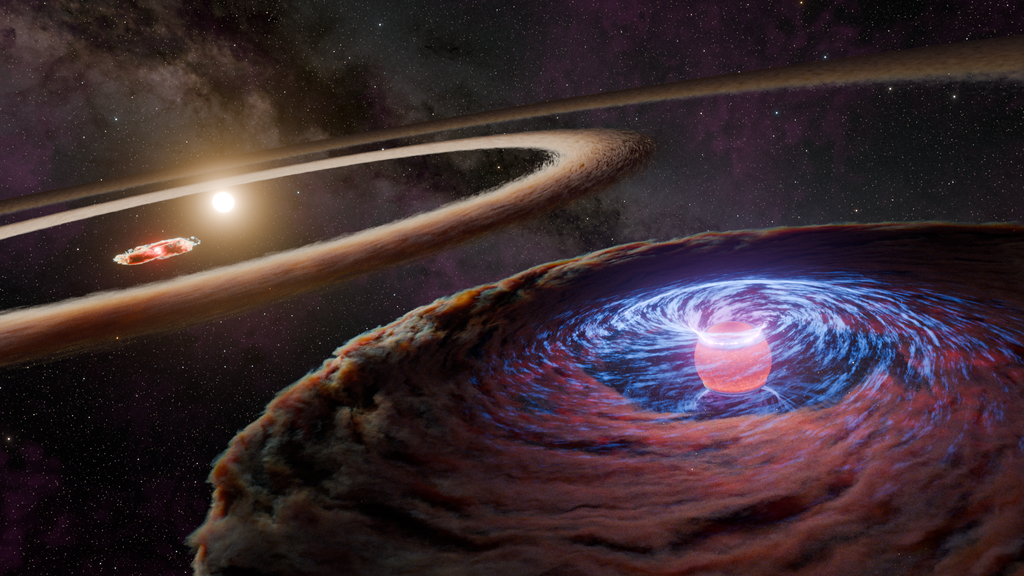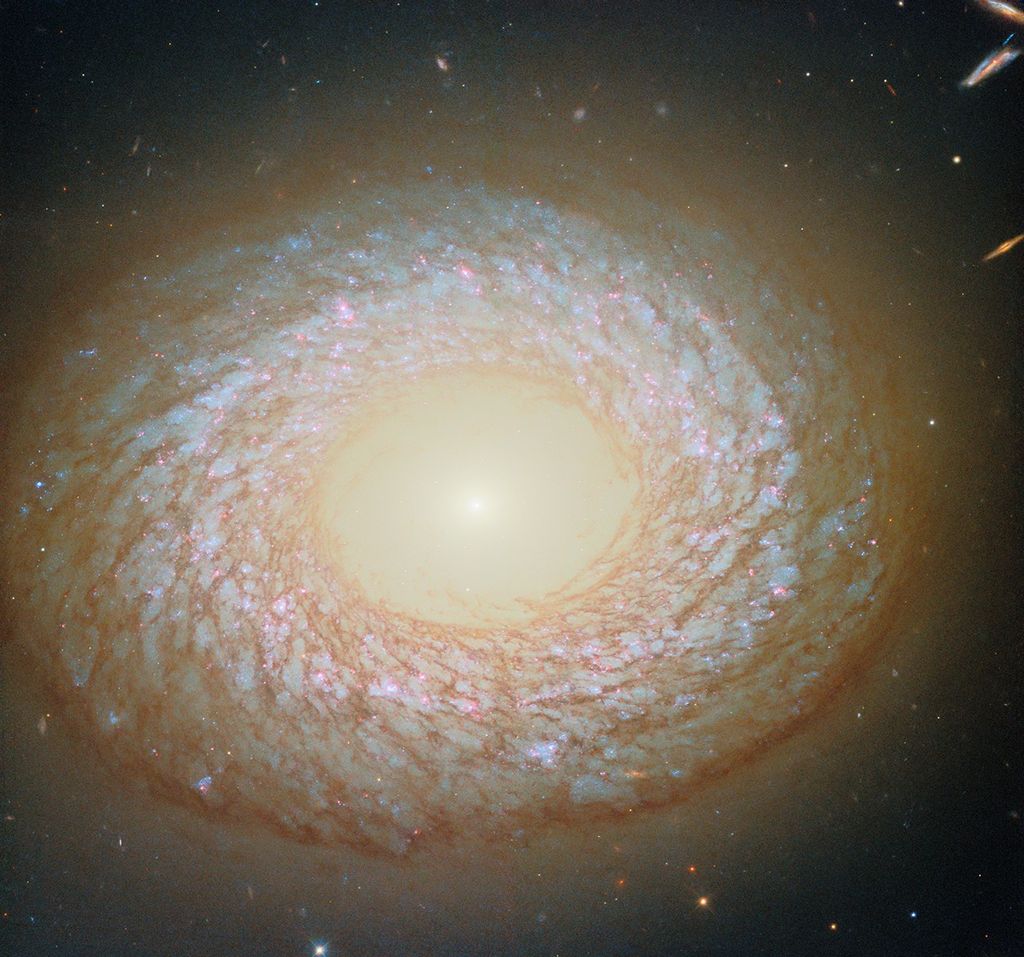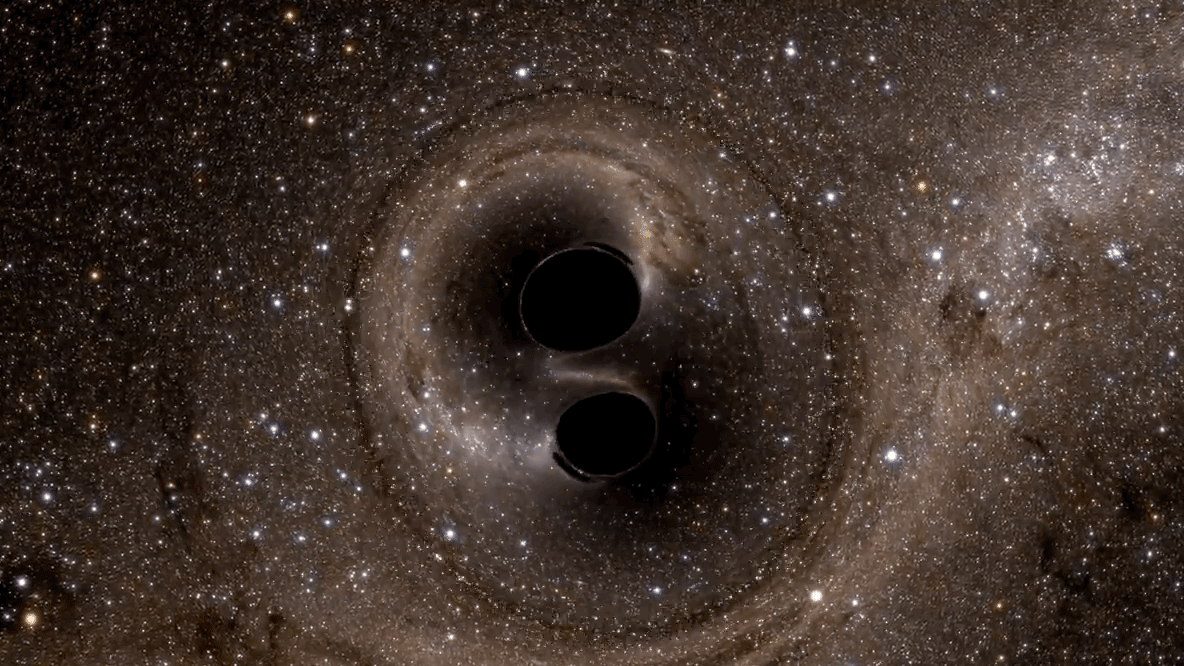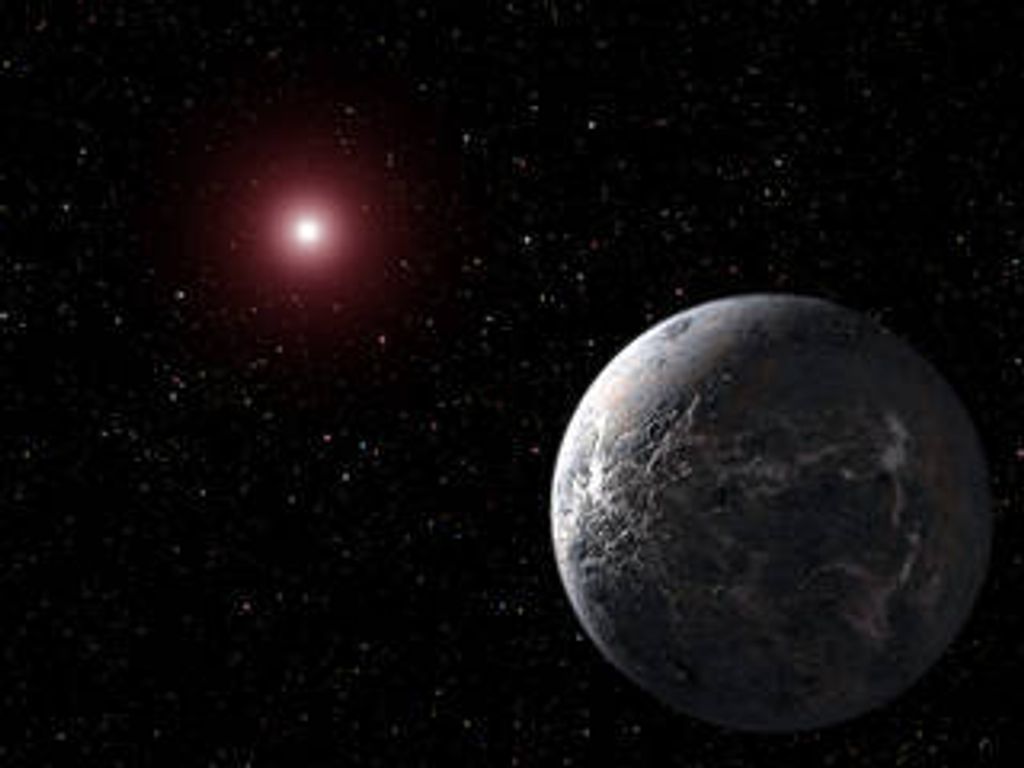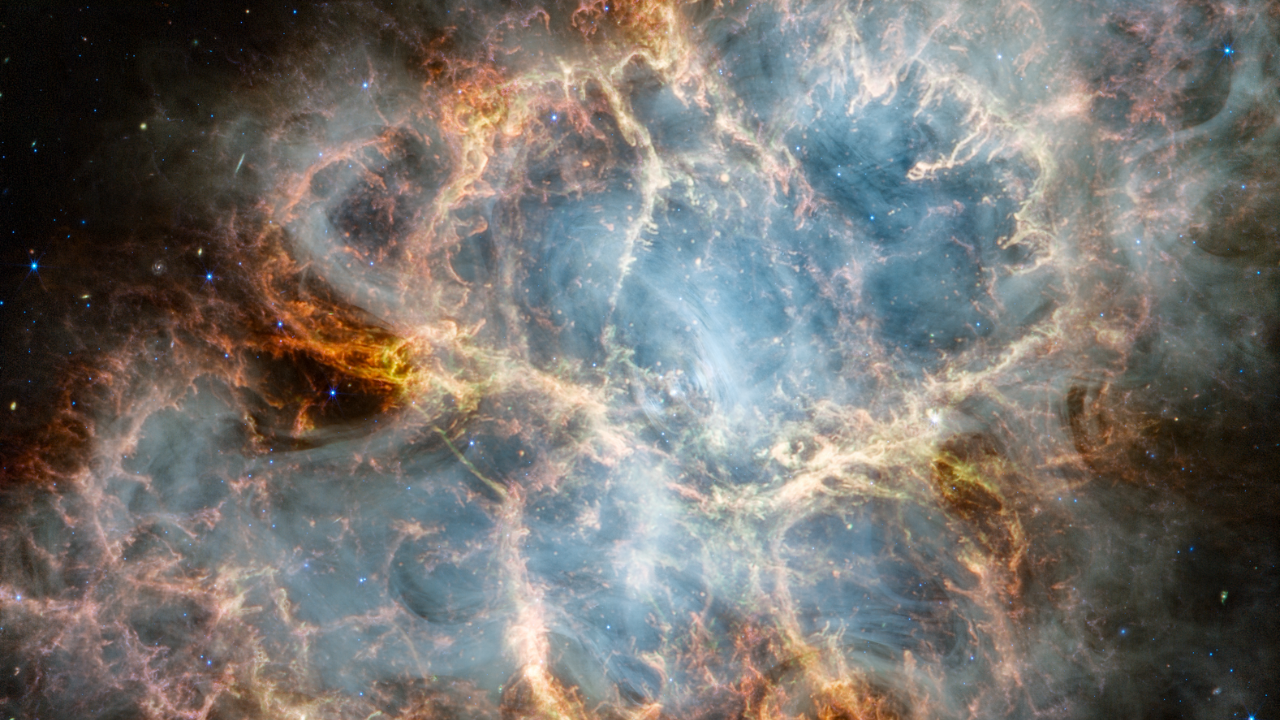1 min read
Crab Nebula (Webb and Hubble Comparison)
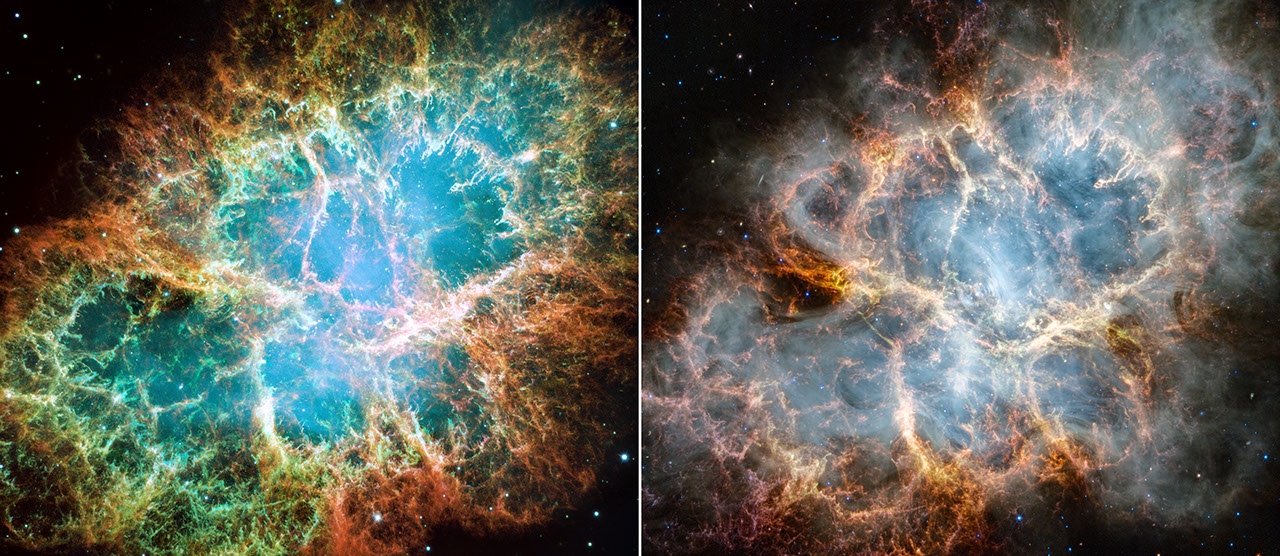
A side-by-side comparison of the Crab Nebula as seen by the Hubble Space Telescope in optical light (left) and the James Webb Space Telescope in infrared light (right). The Hubble image was released in 2005, while astronomers have recently used Webb’s NIRCam (Near-Infrared Camera) and MIRI (Mid-Infrared Instrument) to reveal new details of the Crab Nebula.
In the Hubble image, orange filaments consisting mostly of hydrogen form a crisp, cage-like exterior shell. Blue mottled filaments toward the outer part of the Crab contain neutral oxygen, while singly-ionized sulfur and doubly-ionized sulfur form fluffy red and green material. The bright glow in the interior’s center highlights the nebula’s pulsar, a rapidly rotating neutron star.
Similar to the Hubble optical image, Webb’s infrared capabilities show the supernova remnant’s crisp, cage-like structure of fluffy red-orange filaments of gas that trace doubly ionized sulfur. Among the remnant’s interior, yellow-white and green fluffy ridges form large-scale loop-like structures, which represent areas where dust particles reside. The central area within is comprised of translucent, milky material. This white material is synchrotron radiation, which is emitted across the electromagnetic spectrum but becomes particularly vibrant thanks to Webb’s sensitivity and spatial resolution. It is generated by particles accelerated to extremely high speeds as they wind around magnetic field lines. In the center of this ring-like structure is a bright white dot: the nebula’s pulsar. Note how certain gas filaments are bluer in color. These areas contain singly ionized iron.
By studying Webb data and consulting previous observations of the remnant taken by other telescopes, like Hubble, astronomers can improve their understanding of the Crab Nebula as well as broaden their knowledge on the life and death of stars.
Hubble Image: NASA, ESA, J. Hester, A. Loll (Arizona State University); Webb Image: NASA, ESA, CSA, STScI, T. Temim (Princeton University).
About the Object
- R.A. PositionR.A. PositionRight ascension – analogous to longitude – is one component of an object's position.05:34:32
- Dec. PositionDec. PositionDeclination – analogous to latitude – is one component of an object's position.+22:00:52
- ConstellationConstellationOne of 88 recognized regions of the celestial sphere in which the object appears.Taurus
- DistanceDistanceThe physical distance from Earth to the astronomical object. Distances within our solar system are usually measured in Astronomical Units (AU). Distances between stars are usually measured in light-years. Interstellar distances can also be measured in parsecs.6500 light-years
- Object NameObject NameA name or catalog number that astronomers use to identify an astronomical object.Crab Nebula, M1, NGC 1952
- Object DescriptionObject DescriptionThe type of astronomical object.Supernova Remnant, Pulsar
- Release DateOctober 30, 2023
- Science ReleaseThe Crab Nebula Seen in New Light by NASA’s Webb
- CreditImage: NASA, ESA, CSA, STScI, Jeff Hester (ASU), Allison Loll (ASU), Tea Temim (Princeton University)
Related Images & Videos
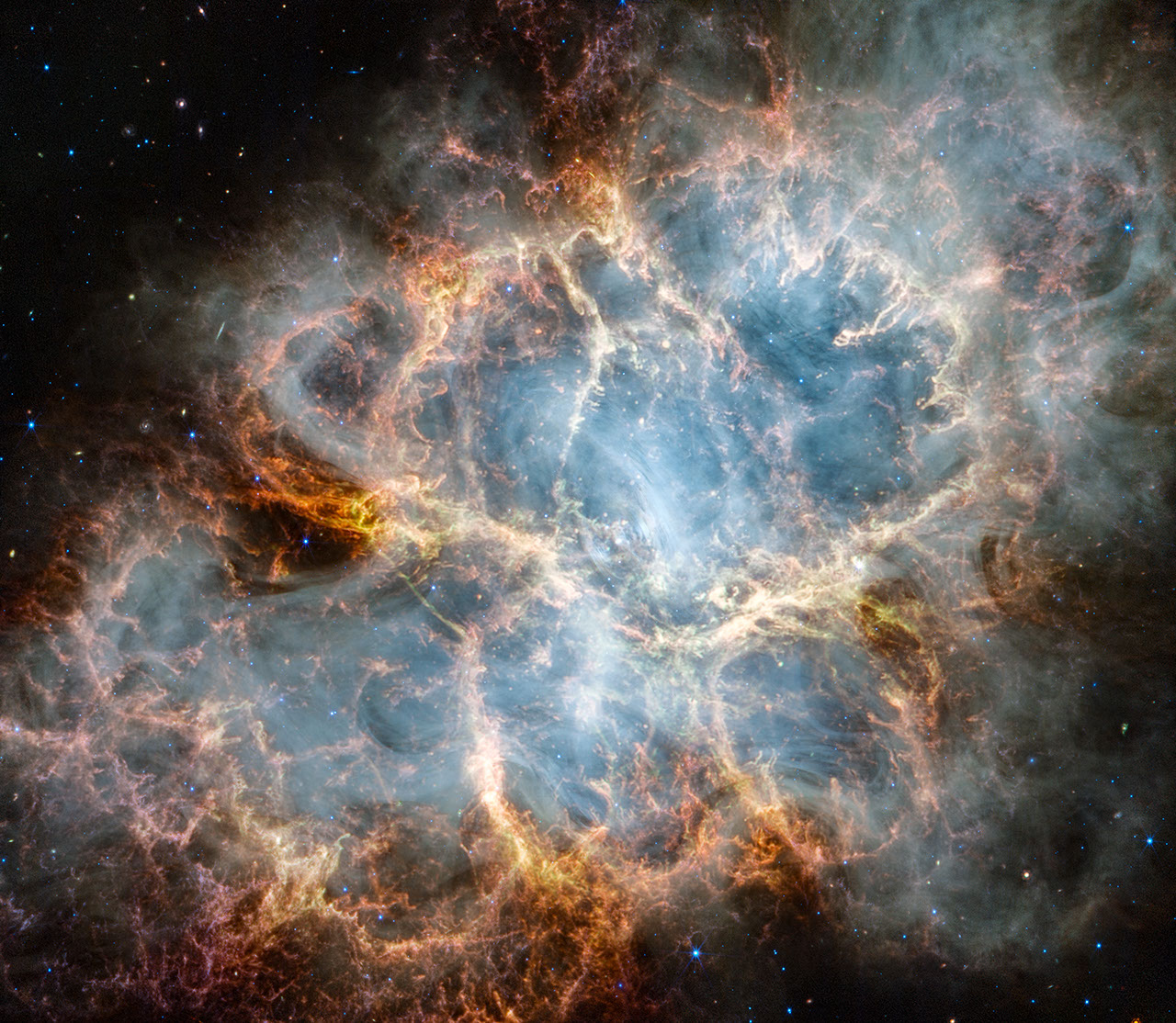
Crab Nebula (NIRCam and MIRI Image)
NASA’s James Webb Space Telescope has gazed at the Crab Nebula in the search for answers about the supernova remnant’s origins. Webb’s NIRCam (Near-Infrared Camera) and MIRI (Mid-Infrared Instrument) have revealed new details in infrared light. Similar to the Hubble optical...
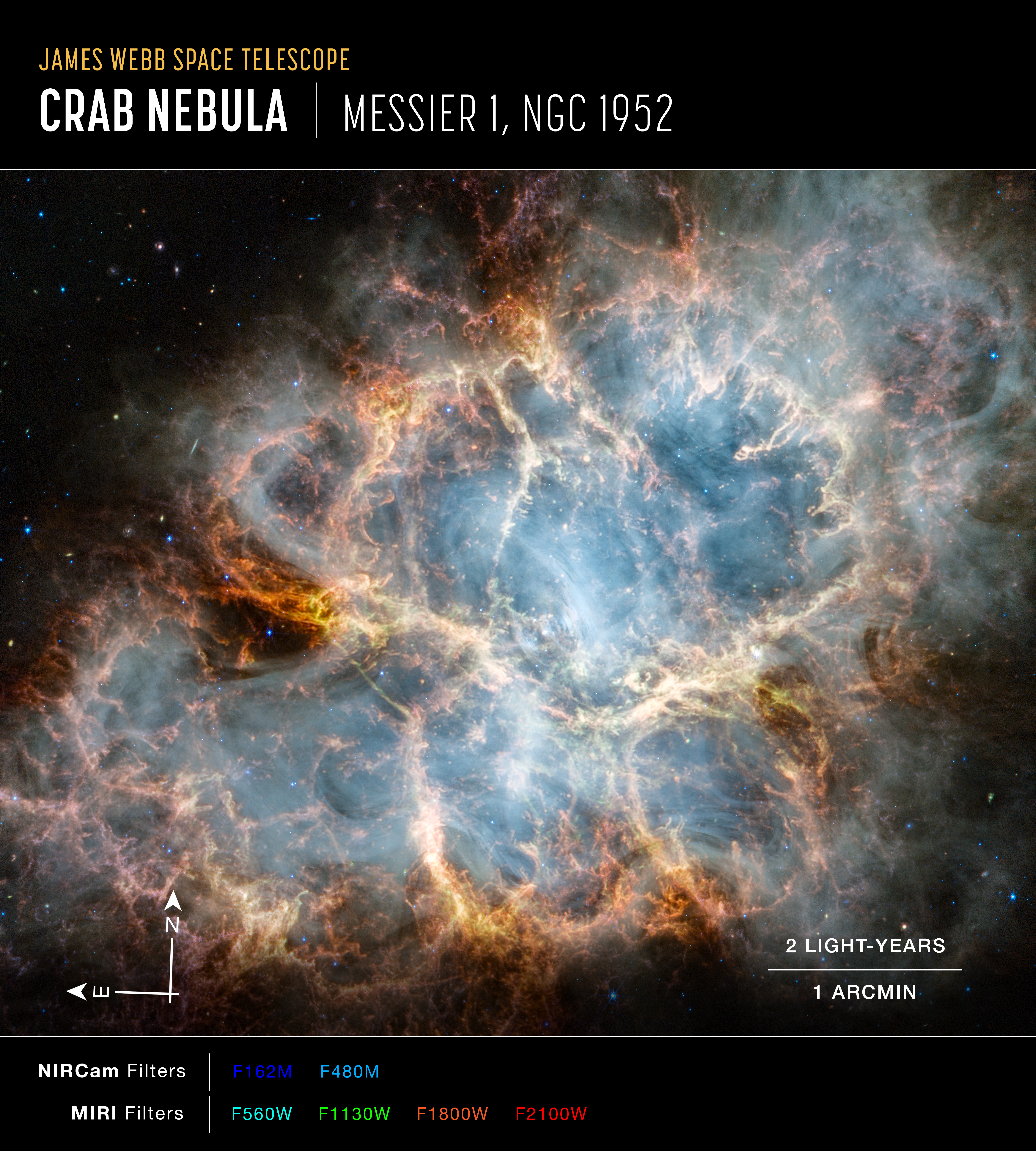
Crab Nebula (NIRCam and MIRI Compass Image)
Image of the Crab Nebula captured by Webb’s NIRCam and MIRI, with compass arrows, scale bar, and color key for reference. The north and east compass arrows show the orientation of the image on the sky. Note that the relationship between north and east on the sky (as seen from...
Share
Details
Laura Betz
NASA’s Goddard Space Flight Center
Greenbelt, Maryland
laura.e.betz@nasa.gov
NASA, ESA, CSA, STScI, Jeff Hester (ASU), Allison Loll (ASU), Tea Temim (Princeton University)

